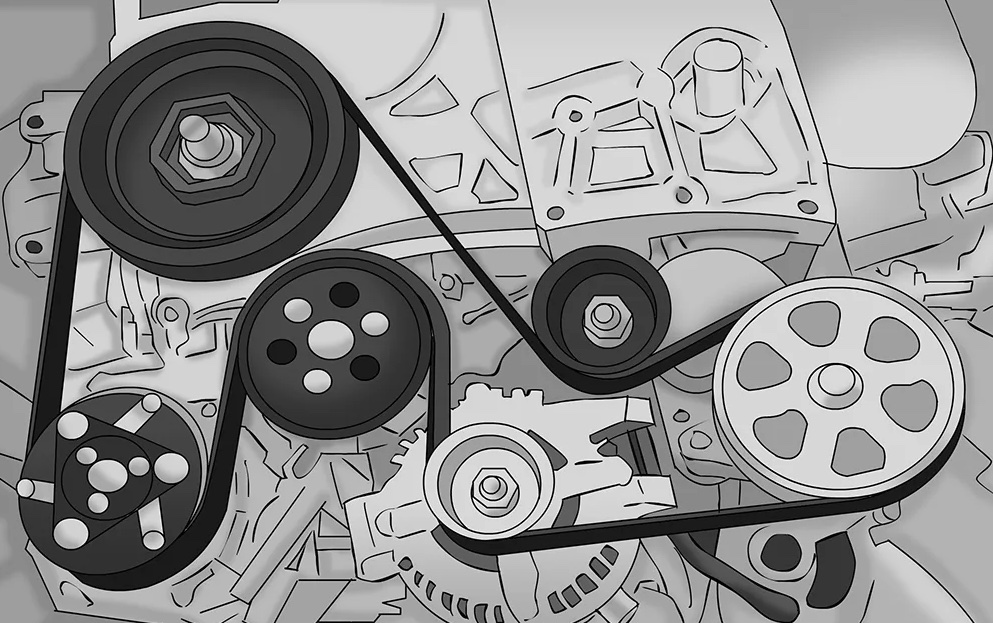

Have you ever gotten into your car and as soon as you start the engine you notice a high-pitched squeal then when you accelerate or make a turn it gets louder? What is the cause of this?
The most common cause of a squealing engine is a bad or failing serpentine belt – also known as the drive belt. The belt is under your hood and wraps around multiple pulleys. It connects the crankshaft to other systems including the alternator, power steering pump, AC, and water pump. When the serpentine belt stops working so do these systems. In this article, we will outline reasons your serpentine belt may be squealing and how to tell if your serpentine belt needs replacing.
Common Serpentine Belt Issues
Today’s serpentine belts typically last between 60,000 and 100,000 miles. As time goes on, wear and tear can take a toll on the belt and the pulleys, resulting in that high-pitched chirping sound when you start your car.
The most common serpentine belt problems are:
- Worn or Cracked Serpentine Belt: Overtime friction wears down the serpentine belt causing it to elongate, and have worn edges, or worn-down teeth. A worn belt can begin to slip causing it to squeal. A worn or cracked belt can eventually snap, so it is important that the belt is replaced when it gets to this point.
- Failing Belt Pulleys: The belt is pulled by several pulleys and a faulty pulley can cause misalignment. Don’t worry! Regular maintenance can detect pulley issues early!
- Loose Tensioner: The tensioner keeps the serpentine belt at a specific tightness. As time goes on, systems naturally degrade and the tensioner may not be able to stay at a specific setting. This can be fixed by readjusting the tensioner every once in a while or completely replacing it.
- Misaligned Belt: Do you park your car outside overnight? The cold air can affect the shape and grip of the serpentine belt. If your vehicle starts to squeal and then stops after it warms up, then a misaligned belt may be the issue. This is because the belt is stiff and brittle. Replacing the belt is the easiest way to fix this issue.
How to Tell if My Serpentine Belt Needs Replacing?
A faulty belt is hard to miss. As soon as you start the engine, you will hear a squealing noise and when you accelerate, it gets worse. Be sure to watch out for these signs and symptoms (as well as the squealing noise) as your serpentine belt may need replacing.
- Difficult Steering: If the squealing sound is more prominent when turning or making a U-turn, this may be due to a faulty belt. If the belt breaks, you will lose power steering making it very difficult to turn the wheel and can be a safety hazard.
- Battery Light – Remember when we said the serpentine belt connects the crankshaft to the alternator? The alternator uses power to charge your battery, therefore a failing belt may trigger the low battery light on your dashboard.
- Overheating – The serpentine belt can also power the water pump, which plays a key role in cooling the engine. A failing belt may also cause your vehicle to overheat.
- AC Issues – Your car’s AC system uses the serpentine belt to run. If your serpentine belt is failing, you might notice squealing when you turn the AC on and getting more prominent when accelerating with the AC on.
As soon as you hear the squealing noise, be sure to call us at Luke’s Auto Service in Essex County New Jersey and our certified technicians will be able to diagnose the engine squeal. If the issue is the serpentine belt, it will eventually need to be replaced to keep you and others safe on the road.
References:
Image:
